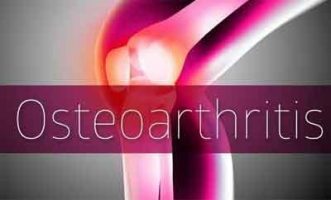- Home
- Editorial
- News
- Practice Guidelines
- Anesthesiology Guidelines
- Cancer Guidelines
- Cardiac Sciences Guidelines
- Critical Care Guidelines
- Dentistry Guidelines
- Dermatology Guidelines
- Diabetes and Endo Guidelines
- Diagnostics Guidelines
- ENT Guidelines
- Featured Practice Guidelines
- Gastroenterology Guidelines
- Geriatrics Guidelines
- Medicine Guidelines
- Nephrology Guidelines
- Neurosciences Guidelines
- Obs and Gynae Guidelines
- Ophthalmology Guidelines
- Orthopaedics Guidelines
- Paediatrics Guidelines
- Psychiatry Guidelines
- Pulmonology Guidelines
- Radiology Guidelines
- Surgery Guidelines
- Urology Guidelines
3D printed cartilage may help treat osteoarthritis

London : Researchers have successfully generated cartilage tissue using a 3D bio printer, an advance that could lead to new treatments for osteoarthritis.
The advance represents a giant step forward in the ability to generate new, endogenous cartilage tissue, researchers at Sahlgrenska Academy in Sweden said.
In future, it should be possible to use 3D bioprinting to generate cartilage based on a patient's own, "backed-up" stem cells, they said.
"This bio printed tissue can be used to repair cartilage damage, or to treat osteoarthritis, in which joint cartilage degenerates and breaks down," researchers wrote in the study published in the journal Scientific Reports.
The research team was able to influence the cells to multiply and differentiate to form chondrocytes (cartilage cells) in the printed structure.
"The fact that the stem cells survived being printed in this manner is a success in itself," researchers said.
The team used cartilage cells harvested from patients who underwent knee surgery, and these cells were then manipulated in a laboratory, causing them to rejuvenate and revert into "pluripotent" stem cells cells that have the potential to develop into many different types of cells.
The stem cells were then expanded and encapsulated in a composition of nanofibrillated cellulose and printed into a structure using a 3D bioprinter.
Following printing, the stem cells were treated with growth factors that caused them to differentiate correctly, so that they formed cartilage tissue.
"In nature, the differentiation of stem cells into cartilage is a simple process, but it is much more complicated to accomplish in a test tube," said Stina Simonsson, Associate Professor at Sahlgrenska Academy.
"We are the first to succeed with it, and we did so without any animal testing whatsoever," said Simonsson.
Each individual stem cell is encased in nanocellulose, which allows it to survive the process of being printed into a 3D structure.
The cartilage formed by the stem cells in the 3D bioprinted structure is extremely similar to human cartilage.
Experienced surgeons who examined the artificial cartilage saw no difference when they compared the bioprinted tissue to real cartilage, and have stated that the material has properties similar to their patients' natural cartilage, researchers said.
Just like normal cartilage, the lab-grown material contains Type II collagen, and under the microscope the cells appear to be perfectly formed, with structures similar to those observed in samples of human-harvested cartilage, they said.

Disclaimer: This site is primarily intended for healthcare professionals. Any content/information on this website does not replace the advice of medical and/or health professionals and should not be construed as medical/diagnostic advice/endorsement or prescription. Use of this site is subject to our terms of use, privacy policy, advertisement policy. © 2020 Minerva Medical Treatment Pvt Ltd